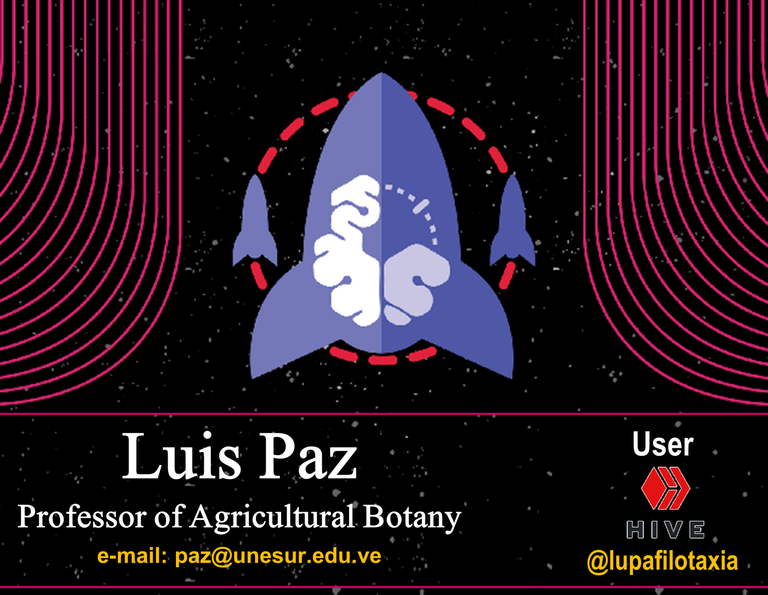Palynology as a botanical discipline of forensic application

Although this week, has added events of some instability in the applications that support the chain #Hive, mainly by the Hive Hardfork 24 that had been scheduled to run on our platform last October 6, I wanted to take advantage that in recent hours the platform has returned to its relative normality, to share a new approach to forensic botany, this time on the utilitarian nature of palynology to solve cases of forensic and criminal.
Introduction
As it was indicated, in the previous delivery titled Plant species as scientific evidence of a forensic and criminalistic nature, the forensic botany as scientific discipline, is not more than the theoretical-practical application of the histology, morphology, systematic and vegetal ecology in the processes of investigation of legal course.
In addition to histology, morphology, systematics and plant ecology, within forensic botany there are other thematic approaches, among which, palynology is the most used area, essentially because of the detailed characteristics exhibited by pollen grains in angiosperms, and the biochemistry of spore decomposition in fern specimens, are elements that provide associative evidence, which help to relate place/time of the year in which the death occurred, this because, besides presenting morphological characteristics by ecological regions, these microscopic reproductive segments are seasonal bio-indicators, present resistance to acidity, and adhere easily to foreign bodies [1].
Therefore, and considering that the collection of clues to plant structures such as pollen and spores, is used in forensic science to gather evidence to help solve serious crimes, among these; cause of death, kidnapping and murder, the objective of this post is to present in a detailed way reported cases, outlining the process of investigation undertaken for its resolution.
Conceptual Overview
Forensic Botany
Forensic botany is the area of botany that offers anatomical, histological, dendrochronological, ecological, molecular, palynological, and limnological information that prescribes usefulness as evidence within the techniques of forensic and criminalistic investigations. This discipline of botany is relatively new on both a national and international scale, with the famous 1935 kidnapping and murder of the son of Charles and Anne Morrow Lindbergh standing out as the first legal case where botanical information was accepted as promising evidence for the resolution of a crime [2].
Palynology as a sub-area of forensic application
Conceptually, palynology refers to the morphological and biochemical study of pollen grains, spores and microscopic vegetative structures resistant to acidity, elements of an associative nature used to prove or disprove a connection between people, places, clothing or objects that are generally being investigated in criminal cases.

Fig. 2 Flowers in full bloom of pollen, pollen granules serve as botanical evidence in the forensic and criminalistic sciences to associate death or murder sites. Public domain image, Author: Free-P, 2015
Palynological evidence
In the forensic and criminalistic science, the utility of a precise botanical evidence relates, if the probable suspect was in the place where it is assumed that the crime occurred, however, taking into account, that geographically the vegetal species present pollen grains and spores with specific morphological characteristics by ecological zones, whose decomposition is relative to the climatic station of certain regions, in addition the adhesion of pollen grains and spores to the body, clothing or objects, become sufficient and important elements to determine place, mobility, approximation of date, time of murder, and the direct link with the person who executed the murder.

Fig. 3. Pollen grains released and attached to vegetative segments. Public domain image, Author: Benorith, 2017
Case study
Since palynology, as a botanical sub-area of forensic application, can be used to trace the place where a murder was committed, the following describes one of the most emblematic cases of the use of palynological evidence in criminal investigation cases.
Ethnic extermination in Bosnia
The crimes perpetrated by unscrupulous people in Bosnia during the 1992-1995 war were investigated by experts in forensic botany, who were able to prove the guilt of Serbian and Croatian forces over mass killings of ethnic groups [3].

Fig. 4 Part of the military arsenal used in the Bosnia-Herzegovina War. Public domain image, Author: Likebosnia, 2015
Manipulation of the biogeographic context
Serbian and Croatian forces tried to manipulate the biogeographical and criminal context in order to hide the genocide committed against innocent people, including women and children, during the war in Bosnia. They exhumed the bodies from mass graves, moved them to smaller graves, and then certified that these people had died in battle.
Forensic expertise
Researchers in forensic botany were able to gather evidence from Bosnian mass graves to prove the guilt of Serbian and Croatian forces over the mass killings of ethnic groups. Experts found pollen grains on the exhumed bodies, which did not match the pollen found in the eco-regions where the battles took place.

Fig. 5 Divergence of plant communities, as a tool for forensic expertise. Public domain image, Author: Geraldsimon, 2009
Evidentiary elements
The soil samples from the ethnic communities, in contrast to the samples analyzed in the areas subjected to battles, contained traces of the same pollen grains that were in the environment surrounding the tombs, which allowed us to deduce that the bodies were originally buried in common graves, but were then moved to the biogeographic context where the battles were taking place, to hide the mass killings of innocent people.
Experts in forensic botany determined that pollen grains from the biogeographic contexts where the battles took place presented variable morphology; therefore, they used this characteristic and verified that pollen grains in the tombs presented specific morphology, element that served to trace the plant specimens that produced the pollen grains, finding similarity with the existing flora in the ethnic communities, essentially species of the families Pontederiaceae, Marantaceae, Malpighiaceae, Lytharaceae, Iridiaceae, Fabaceae, and Alismataceae.
SCIENTIFIC CONTRIBUTIONS OF THIS PUBLICATION
-
In this second issue, it was possible to develop theoretical and expert elements related to palynology as a sub-area of forensic application, highlighting the particularity of pollen grains in angiosperms, and the biochemistry of spore decomposition in fern specimens, elements widely used as scientific evidence of forensic and criminalistic character, in addition, a case study with manipulation of the biogeographical context was presented, specifically on the investigation and forensic expertise developed to demonstrate the guilt of the Serbian and Croatian forces on the mass killings of ethnic groups that occurred during the war in Bosnia.
BIBLIOGRAPHICAL REFERENCES CONSULTED AND CITED:
[1] Heather M. Forensic botany: principles and applications to criminal casework. Boca Raton London New York Washington, D.C. 2005. Book: Online Access
[2] Jafet M. La Botánica como herramienta de la investigación criminal. Centro de Ecología del Instituto Venezolano de Investigaciones Científicas. S/F. Article: Online access
[3] Bandr F. The branches of Forensic Botany. International Journal of Development Research. 2018; 08; 10: 23294-23297. Article: Online access
[4] Ferri G., Alú M., Corradini B., Angot A., and Beduschi G. Land plants identification in forensic botany: Multigene barcoding approach. Forensic Science International: Genetics Supplement. 2008; 1: 593–595. Article: Online access
[5] Aquila I., Ausania F., Di Nunzio C., and Ricci P. The role of forensic botany in crime scene investigation: case report and review of literature. Journal of Forensic Science. 2014; 59; 3: 820-824. Article: Online access
ATTENTION
Readers and followers
If you wish to read more scientific articles in English or Spanish, of excellent academic quality, do not hesitate to visit #STEMSocial and #STEM-espanol, communities that promote scientific content mainly in the areas of Science, Technology, Engineering and Mathematics.
OBSERVATION

0
0
0.000
https://twitter.com/lupafilotaxia/status/1314408381478842368
#Posh Twitter:
https://twitter.com/lupafilotaxia/status/1314408381478842368
Thanks for your contribution to the STEMsocial community. Feel free to join us on discord to get to know the rest of us!
Please consider supporting our funding proposal, approving our witness (@stem.witness) or delegating to the @stemsocial account (for some ROI).
Thanks for using the STEMsocial app and including @stemsocial as a beneficiary, which give you stronger support.
To reiterate the constant support, it will never be enough, to continue sharing content for the label in part is my contribution to repay the support I receive from the healing team of @STEMsocial. Thank you
Hola amigo @lupafilotaxia. Interesante artículo. Muchos insectos son utilizados, también, en esta área aunque se muy poco de eso. Una pregunta: ¿Será que un post publicado en steemit recientemente pero reeditado, lo podrá publicar en StemSocial?
Saludos estimado profesor @josedelacruz, he observado que algunos usuarios mantienen cierta actividad en la plataforma STEEM, y vienen haciendo eso que usted plantea, y ante esa situación algunas comunidades indican que al no tratarse de la misma cadena de bloques no existen inconveniente, sin embargo, no existe un consenso al respecto y se han creado divergencias, ahora bien, en el caso de STEMsocial a la fecha no conozco de un caso dónde el post se suba en ambas cadenas.